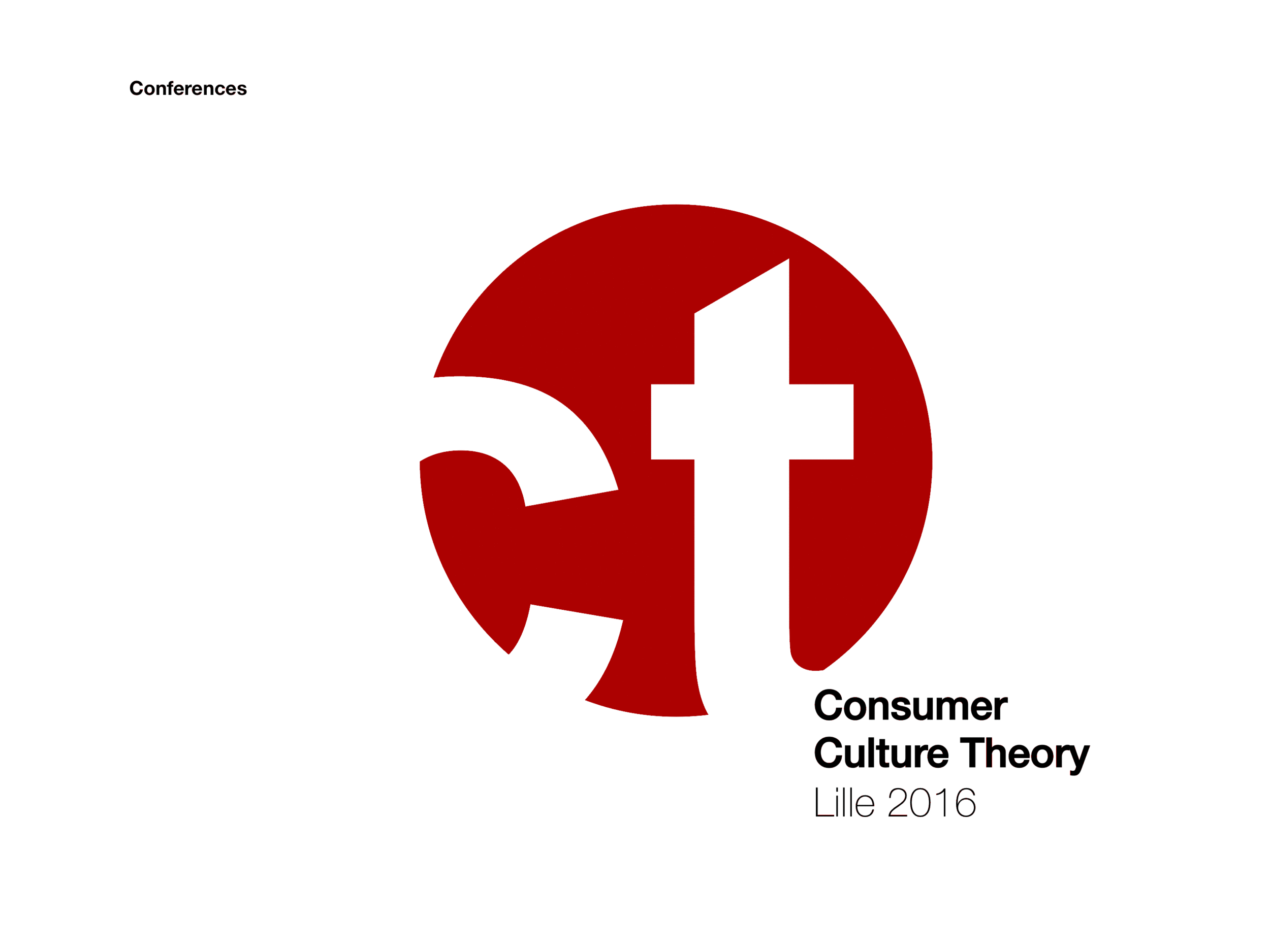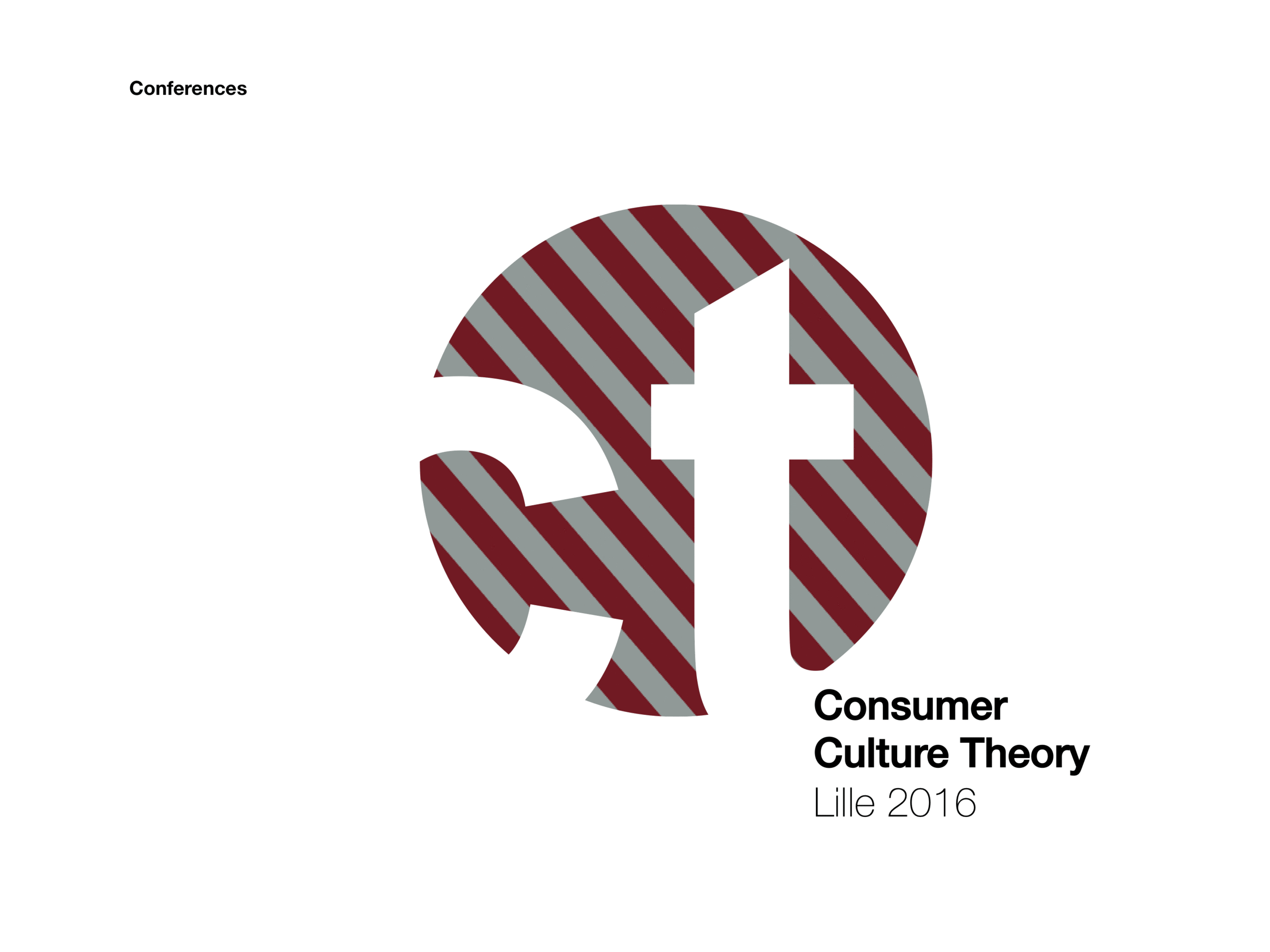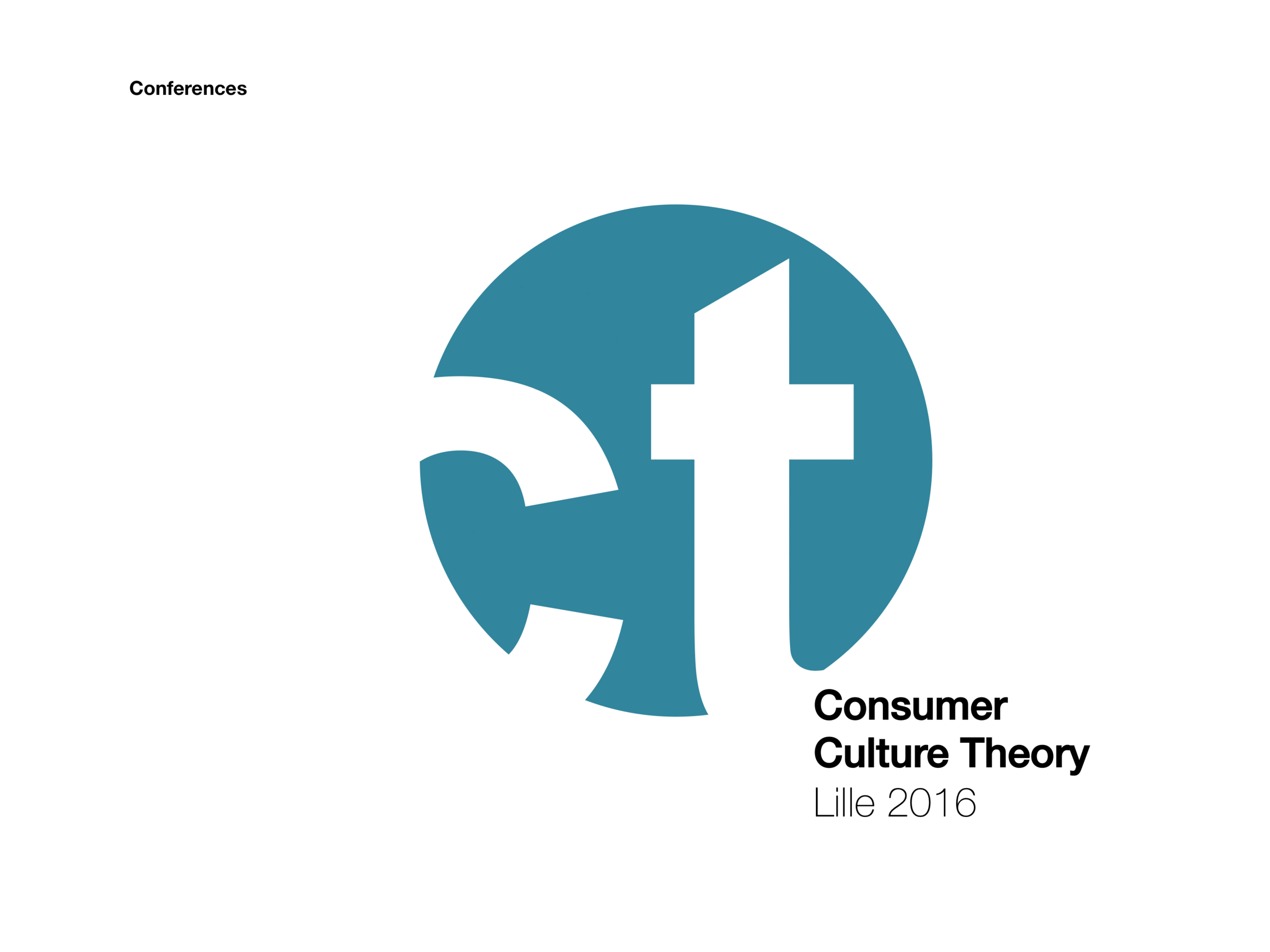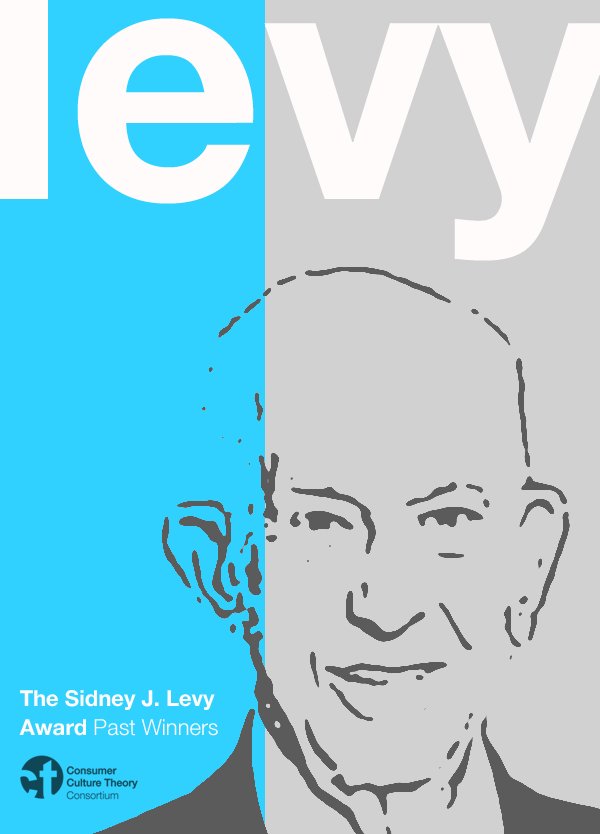A Swiss-inspired simple design. The visual component on the left side is intentionally "incomplete." It has some permeability and openness going on but also contrast and overlap. One could read dualism, synthesis, and even micro-market-macro levels into it. The "imaginative" on the left is complemented with the "explanatory" of the typographic part. The key ingredients: Helvetica Neue, the simple geometric shape of the circle, a warm orange, and lots of white space.
CCT could be seen as a community of scholars who are curious about consumers, culture, and the marketplace. To bring these characteristics out, I borrowed from a style pioneered after the war by a group of Swiss designers such as Armin Hofmann, Josef Müller Brockmann, Max Bill, Richard P Lohse, Hans Neuberg, and Carlo Vivarelli who combined a cold and rational grid style with photo montage and warm colors. In the Swiss design style, the goal is to create an un-eccentric piece of visual communication that connects people and institutions rather than an illustration of a particular ideological worldview. Along these lines, the orange signifies CCT's commitment to the success of young scholars and its respect for the contributions made by other research paradigms.
The logo short form, a translation of the "cctc" into its essential elements - the c, the t, and the circle - is ideal for stand-alone uses (e.g., letter head, Twitter, etc.).
The short form can double as a customizable canvas. Here are a few examples of how the logo accommodates individual expression without sacrificing consistency. Each team of co-chairs can set their own visual emphasis. These are not the actual conference logos but mockup examples for illustration purposes.




Lastly, one additional benefit of the proposed style is that it can be extended to many other instances of CCT's visual communication without being overly rigid and constraining. Here are a few examples of what is generally possible. Again, these examples are not to be understood as binding templates but merely as examples of what could be done.








